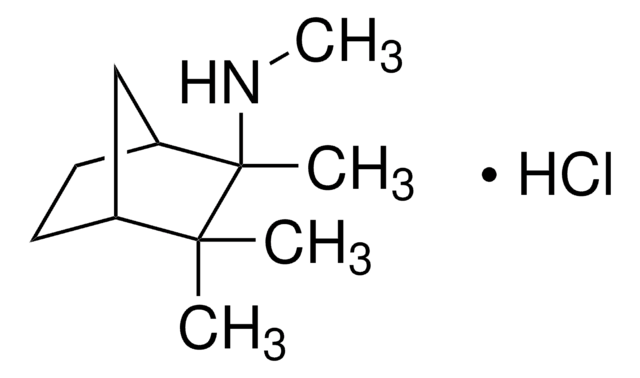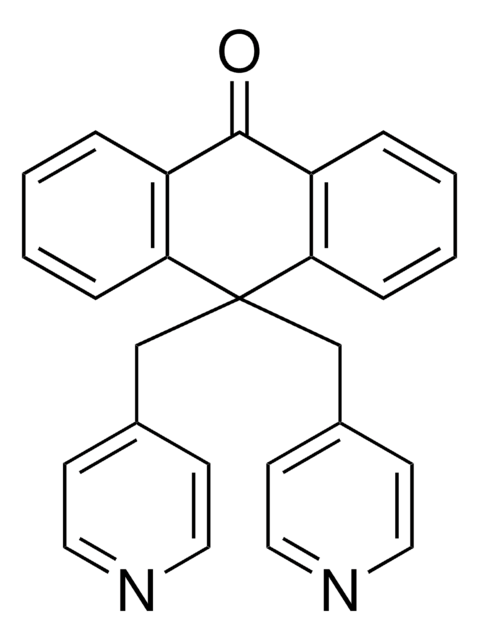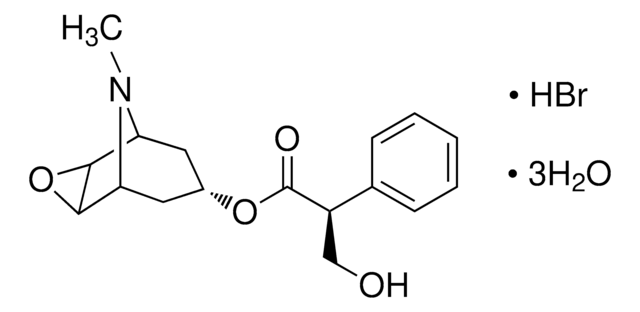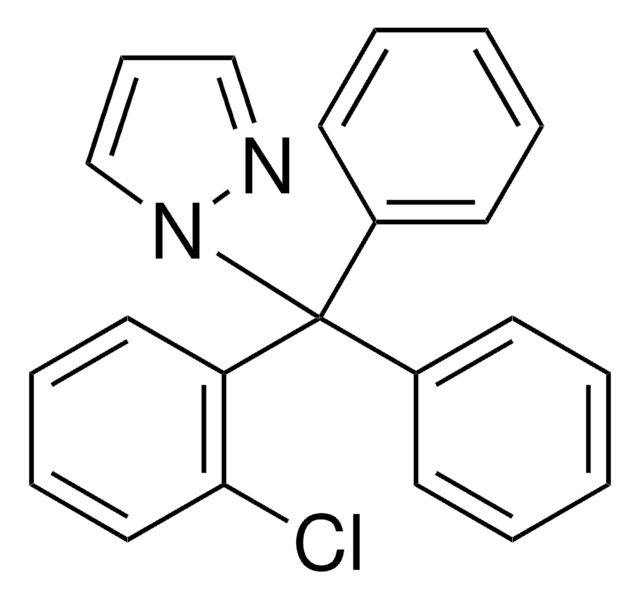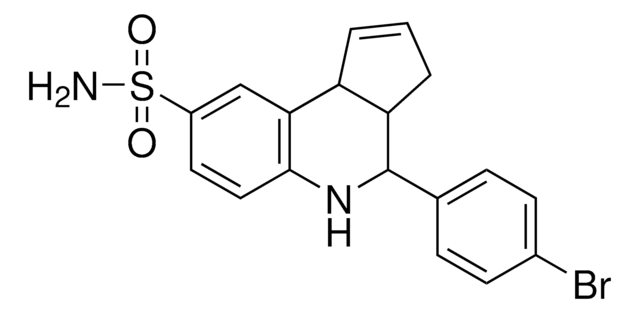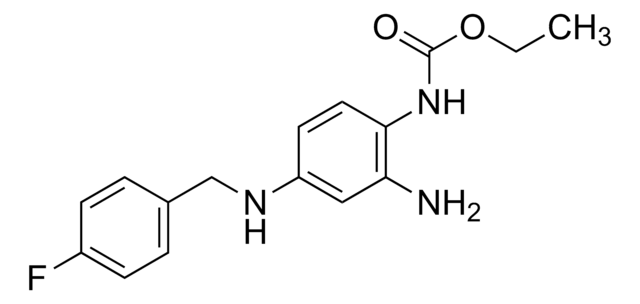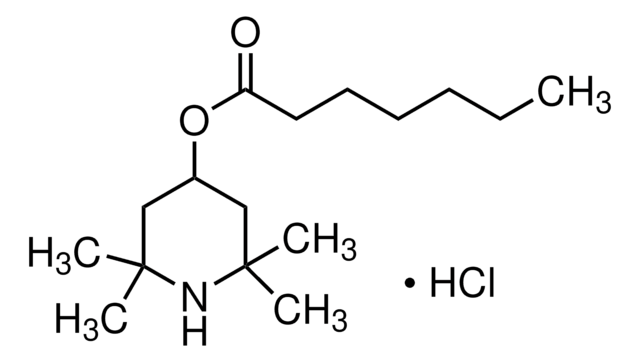Kluczowe dokumenty
L134
Linopirdine
≥98% (HPLC)
Synonim(y):
1,3-Dihydro-1-phenyl-3,3-bis(4-pyridinylmethyl)-2H-indol-2-one, DuP 996
About This Item
Polecane produkty
Poziom jakości
Próba
≥98% (HPLC)
kolor
white to off-white
rozpuszczalność
DMSO: >10 mg/mL
ethanol: 240 mg/mL
ciąg SMILES
O=C1N(c2ccccc2)c3ccccc3C1(Cc4ccncc4)Cc5ccncc5
InChI
1S/C26H21N3O/c30-25-26(18-20-10-14-27-15-11-20,19-21-12-16-28-17-13-21)23-8-4-5-9-24(23)29(25)22-6-2-1-3-7-22/h1-17H,18-19H2
Klucz InChI
YEJCDKJIEMIWRQ-UHFFFAOYSA-N
informacje o genach
rat ... Kcnj1(24521)
Opis ogólny
Działania biochem./fizjol.
Informacje prawne
Kod klasy składowania
11 - Combustible Solids
Klasa zagrożenia wodnego (WGK)
WGK 3
Temperatura zapłonu (°F)
Not applicable
Temperatura zapłonu (°C)
Not applicable
Środki ochrony indywidualnej
Eyeshields, Gloves, type N95 (US)
Wybierz jedną z najnowszych wersji:
Masz już ten produkt?
Dokumenty związane z niedawno zakupionymi produktami zostały zamieszczone w Bibliotece dokumentów.
Nasz zespół naukowców ma doświadczenie we wszystkich obszarach badań, w tym w naukach przyrodniczych, materiałoznawstwie, syntezie chemicznej, chromatografii, analityce i wielu innych dziedzinach.
Skontaktuj się z zespołem ds. pomocy technicznej